In this blog, we will take you through everything you need to know about Jantar Mantar, one of the famous historical places in Delhi, including its history, architectural significance, how to reach there, ticket prices, facts about jantar mantar delhi and much more.
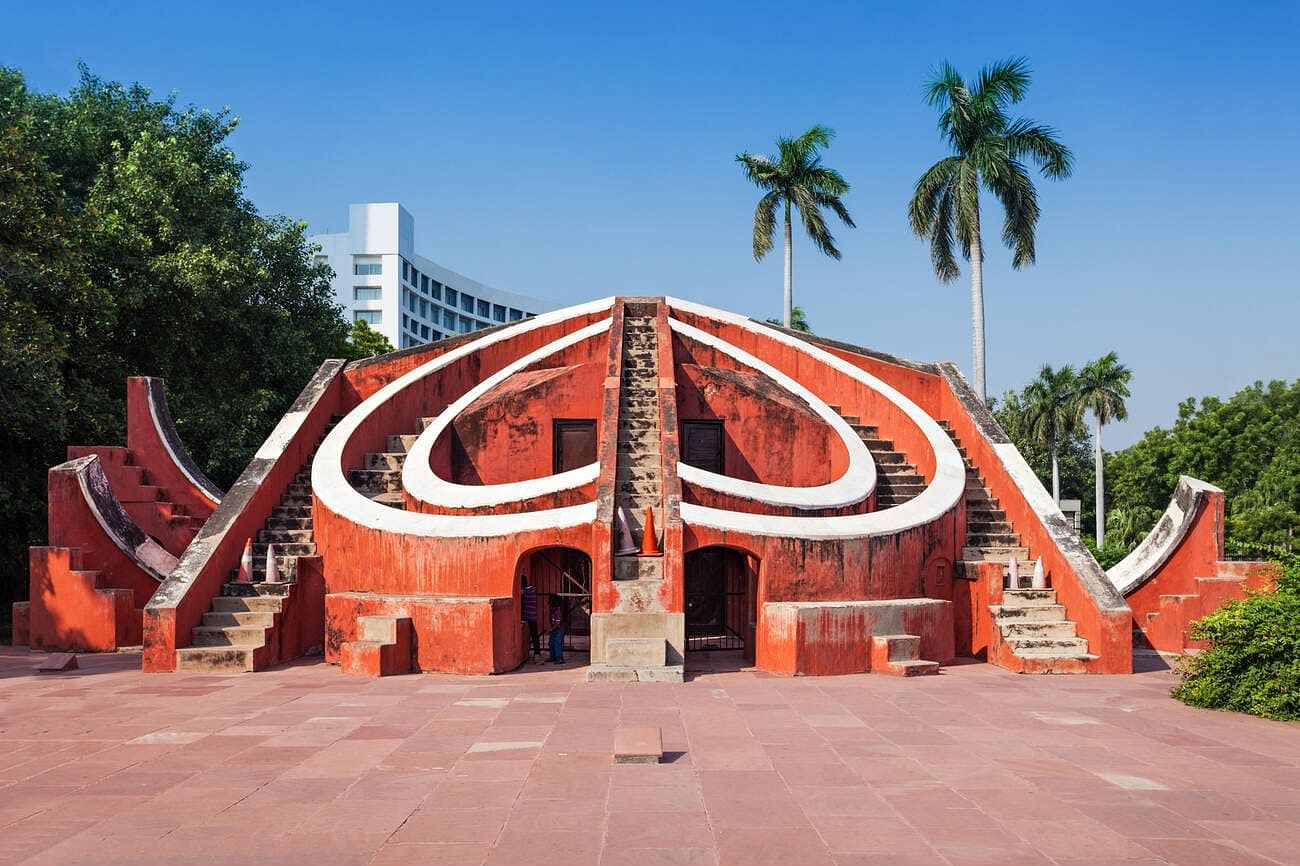
Table of Contents
Table of Contents
- History of Jantar Mantar Delhi
- Architecture of Jantar Mantar New Delhi
- How to Reach Jantar Mantar New Delhi
- Jantar Mantar Delhi Ticket Price
- Jantar Mantar Timings
- Best Time to Visit Jantar Mantar in Delhi
- Interesting Facts About Jantar Mantar Delhi
- Things to See at Jantar Mantar Delhi
- Attractions Near Jantar Mantar New Delhi
- Nearby Tourist Spots of Jantar Mantar Delhi
- Tips for Visiting Jantar Mantar in Delhi
- Conclusion
History of Jantar Mantar Delhi
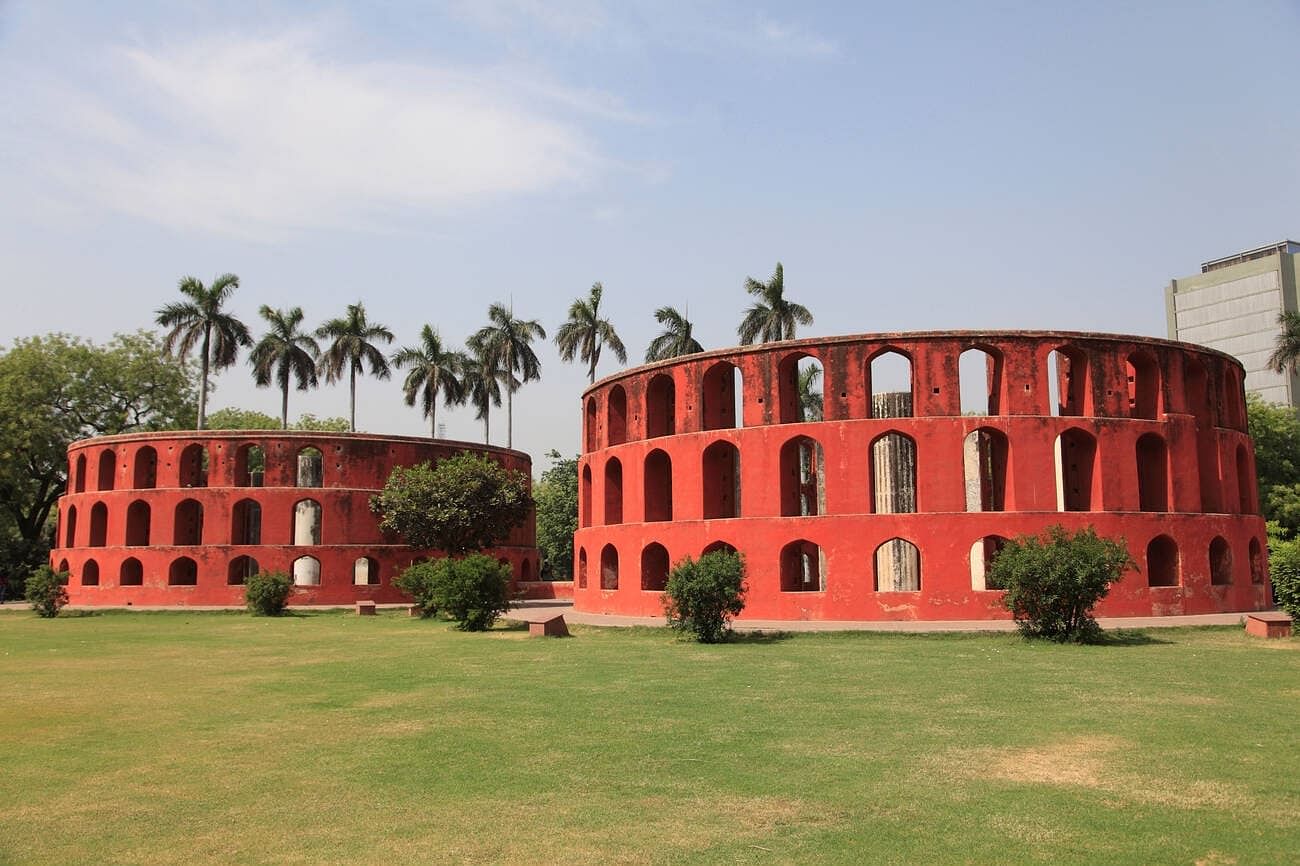
The term “Jantar Mantar” is derived from the Sanskrit words ‘Yantra’ meaning instrument and ‘Mantra’ meaning formula or calculation. The instruments here were designed for precise astronomical measurements to study the movements of celestial bodies.
Architecture of Jantar Mantar New Delhi
The most notable instruments include:
- Samrat Yantra: Also known as the Supreme Instrument, this is the largest sundial in the world. It measures time within an accuracy of two seconds.
- Rama Yantra: Two cylindrical structures designed to measure the altitude and azimuth of celestial objects.
- Jayaprakash Yantra: A hollow hemispherical instrument that helps to locate celestial objects.
- Misra Yantra: A combination of five instruments that measures the longest and shortest days of the year and the exact moment of noon in various cities around the world.
How to Reach Jantar Mantar New Delhi

- By Metro: The nearest metro station is Rajiv Chowk on the Yellow and Blue Lines, just a short walk from the observatory.
- By Bus: Numerous DTC buses ply from different parts of Delhi to Connaught Place. You can get down at Palika Kendra or Janpath and walk to Jantar Mantar.
- By Auto-Rickshaw/Cab: You can also hire an auto-rickshaw or a cab from anywhere in the city to reach the observatory.
Jantar Mantar Delhi Ticket Price
- Indian Citizens: ₹15 per person
- Foreign Tourists: ₹200 per person
- Children (up to 15 years): Free
Tickets can be purchased at the entrance, or you can book them online through the Archaeological Survey of India (ASI) website.
Jantar Mantar Timings
Best Time to Visit Jantar Mantar in Delhi
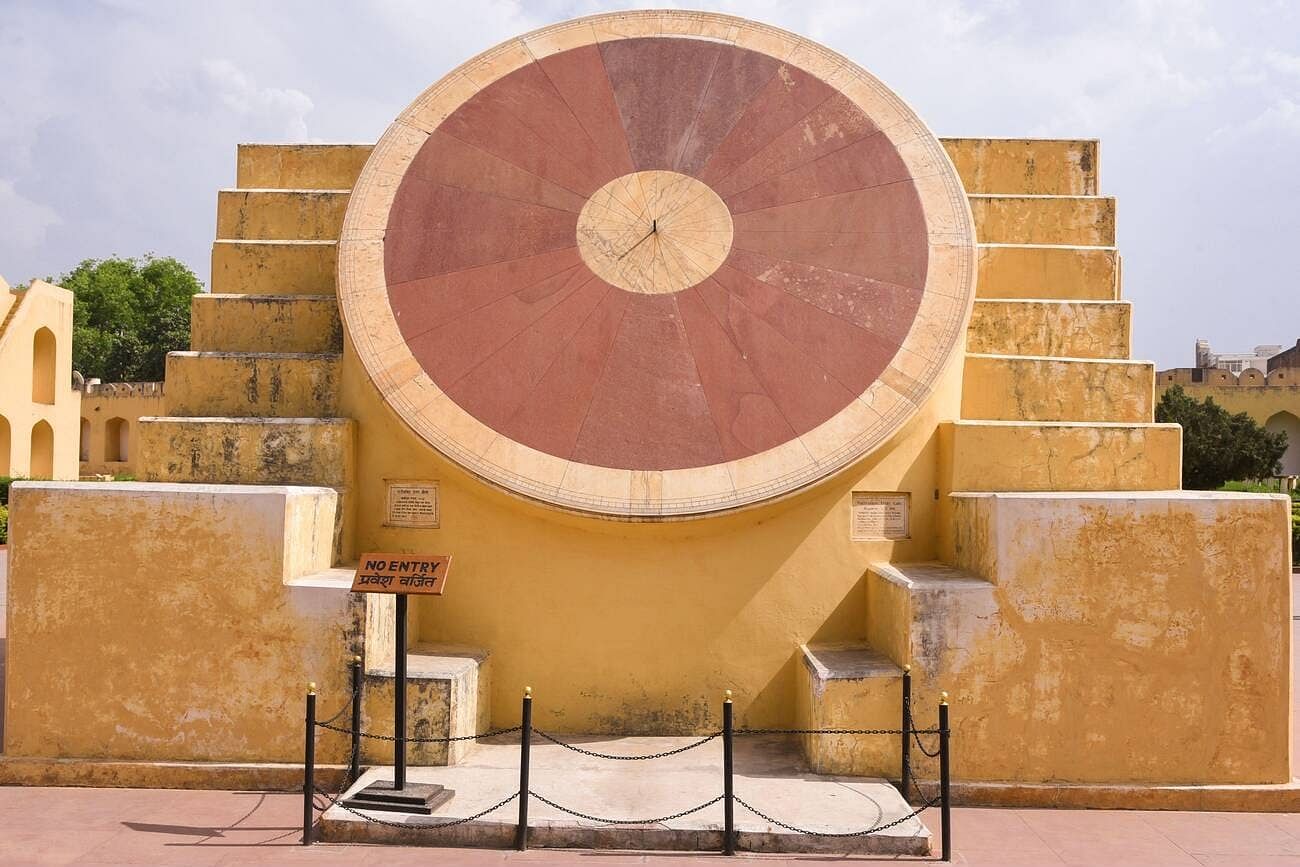
Interesting Facts About Jantar Mantar Delhi
- Largest Sundial: The most interesting facts about jantar mantar delhi is Samrat Yantra at Jantar Mantar is the largest sundial in the world, standing at a height of 27 metres.
- Astrological Significance: Apart from astronomical observations, Jantar Mantar is also believed to have astrological significance, with many believing that the observatory was used to predict the future.
- World Heritage Site: The Jantar Mantar in Jaipur, which is closely related to the one in Delhi, is a UNESCO World Heritage Site. The Delhi observatory, while not a UNESCO site, shares much of the same historical and scientific significance.
Things to See at Jantar Mantar Delhi
Don’t miss the intricate geometric patterns and the perfect alignment of the structures, which speak volumes about the architectural prowess of that era.
Attractions Near Jantar Mantar New Delhi
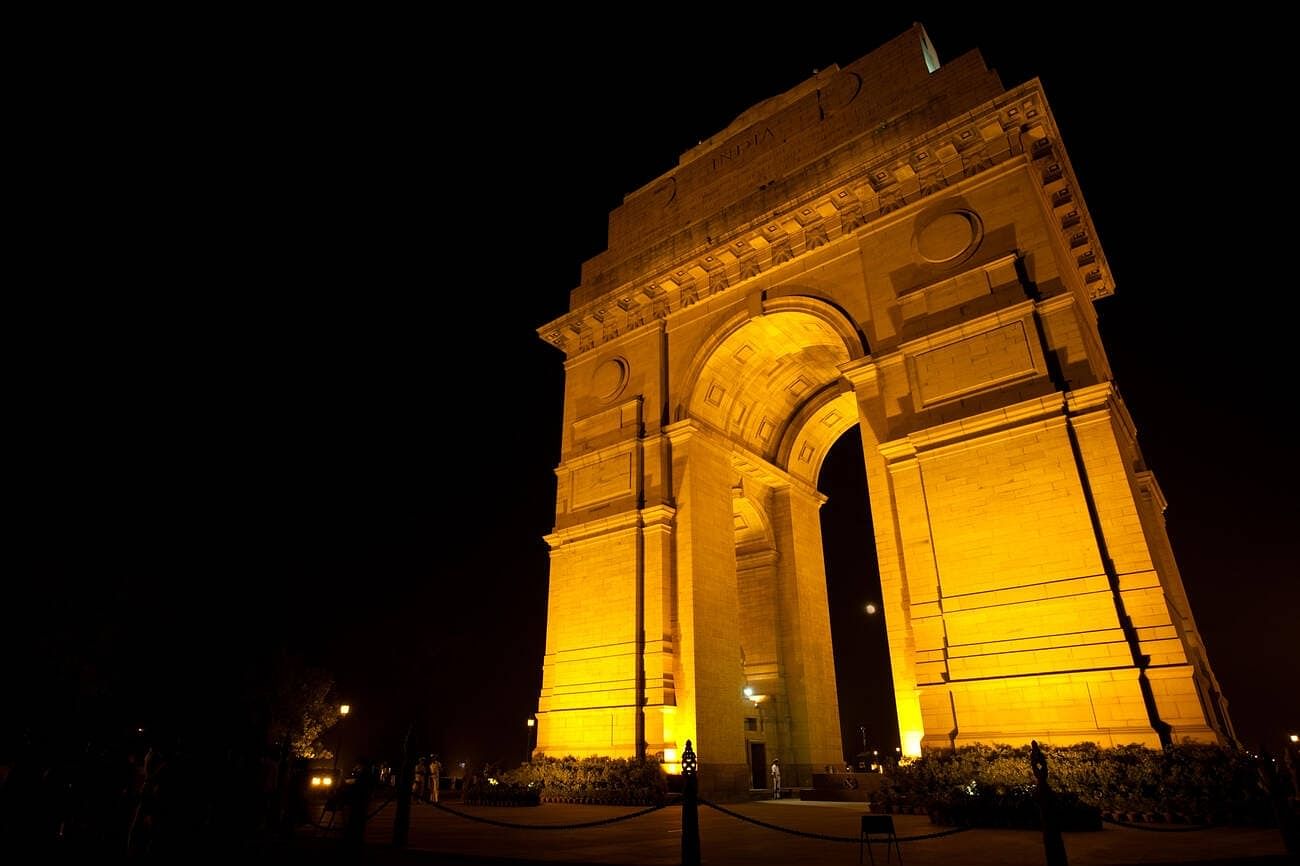
- Connaught Place: One of Delhi’s prime commercial and entertainment hubs, Connaught Place is perfect for shopping, dining, and enjoying the city’s vibrant atmosphere.
- India Gate: A war memorial located just a short drive away, India Gate is a must-visit landmark in Delhi.
- Gurudwara Bangla Sahib: A serene and spiritual place, this Sikh temple is located near Jantar Mantar and is known for its beautiful architecture and peaceful ambiance.
- National Museum: A treasure trove of Indian history and culture, the National Museum is located a short distance away and offers a deeper insight into India’s rich heritage.
Nearby Tourist Spots of Jantar Mantar Delhi
- Rashtrapati Bhavan: The official residence of the President of India, Rashtrapati Bhavan is an architectural marvel and a symbol of India’s sovereignty.
- Agrasen Ki Baoli: An ancient step well located near Connaught Place, the most visited nearby tourist spots of Jantar Mantar. This site is perfect for history buffs and those interested in Delhi’s mediaeval past.
- Janpath Market: A bustling market known for its handicrafts, clothing, and souvenirs, Janpath is a great place to shop for unique items. Moreover, you can check out some best weekend getaways from Delhi.
Tips for Visiting Jantar Mantar in Delhi
- Visit Early: To avoid the crowds and the heat, it’s best to visit Jantar Mantar early in the morning.
- Photography: Carry a good camera, as the site offers excellent opportunities for photography, especially the intricate designs and shadows created by the instruments.
- Read Before You Go: A little reading about the instruments beforehand can enhance your understanding and appreciation of the site.
- Guided Tours: Consider hiring a guide or joining a group tour for a more comprehensive understanding of the scientific significance of the observatory. Tourists must check out the essential travel tips for Delhi for their safe and memorable visit here.
Conclusion
Plan your visit to Jantar Mantar in Delhi to explore this incredible observatory and immerse yourself in the legacy of Maharaja Jai Singh II. With its central location, accessibility, and historical significance, Jantar Mantar is a treasure trove of knowledge and a proud symbol of India’s advancements in astronomy.
Get exclusive travel insights & updates into your inbox!
*By clicking subscribe you'll receive emails from WanderOn.

Shrutika Parab
★★★★★24 May 2024
“Thank you Team Wanderon for the amazing Ladakh Experience. Right from the point of making the bookings with Mr. Chakshu to the point of completion of the trip received amicable support.
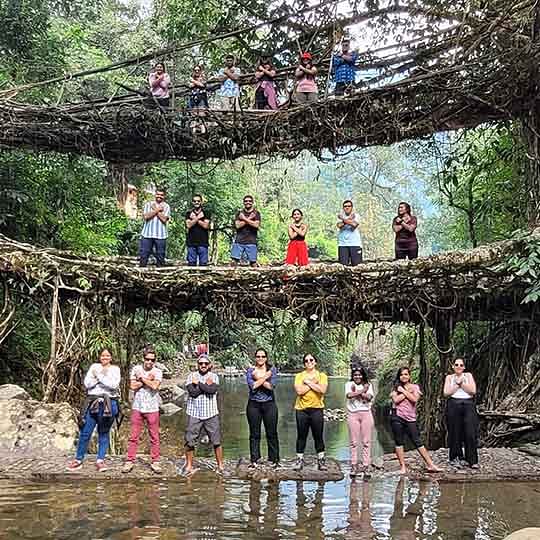
Sonal Shekhar Dash
★★★★★9 May 2024
“I did my first solo trip in India with WanderOn. Initially I was sceptical about their Meghalaya-Kaziranga trip as I didn't have any prior experience with them but the team assured me that it's going to be one of the best experiences of my life.

Archana Awati
★★★★★30 Apr 2024
“In Ladakh, find the perfect blend of culture, adventure, and serenity. December last year I decided that my next trip would be Ladakh but didn’t know how to go about it. I knew I wanted to travel in a group, as I had prior experiences of traveling in a group but wanted an organiser I could trust. Ladakh isn’t like other destinations wherein you need some instructions due to the high altitudes.
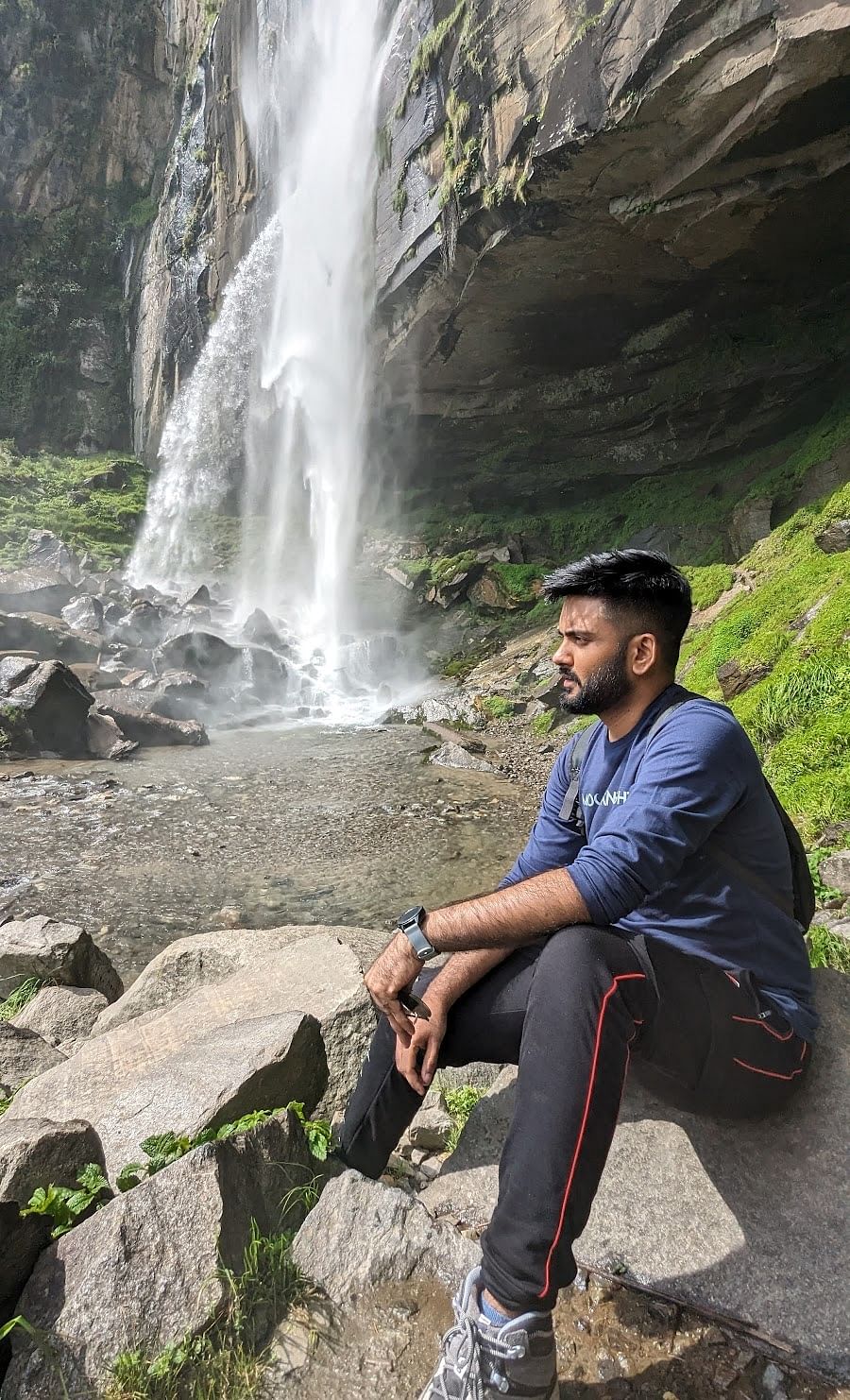
Kartik Dilawari
★★★★★4 Jul 2024
“After an amazing trip to Tirthan with WanderOn, I decided to go to Manali-Jispa with them and yet again, the experience was worth every penny. The place was very beautiful and the quality of service was top-notch, the itinerary was very good and the quality of transportation and stays were very good. Had an awesome time there and made some good friends as well. Lastly, our trip captains Priyasha and Rachit managed the entire trip very well and were so fun and made our trip an experience worth remembering.
FAQ'S
01
What is Jantar Mantar in Delhi and its significance?
Jantar Mantar in Delhi is an 18th-century astronomical observatory built by Maharaja Jai Singh II. It consists of large-scale instruments designed for precise astronomical measurements, such as tracking celestial bodies and predicting eclipses. Its significance lies in its role as a historical site that blends science, art, and architecture, offering insights into ancient India’s astronomical achievements.
02
Is Jantar Mantar accessible to the public?
03
What are the key attractions within Jantar Mantar?
04
What are the visiting hours and entry fees for Jantar Mantar?
WanderOn Special

WANDERON EXPERIENCES PVT LTD
3rd Floor, Building No-436, Phase IV, Udyog Vihar, Sector-18, Gurugram, Haryana-122015



